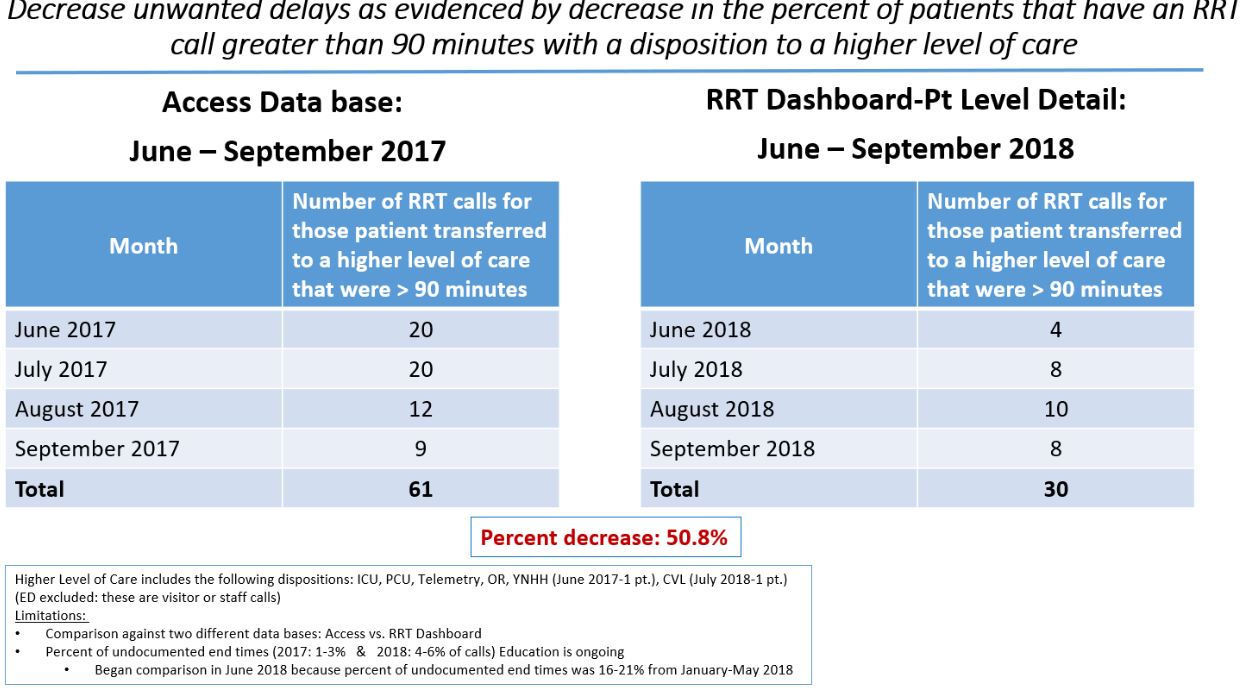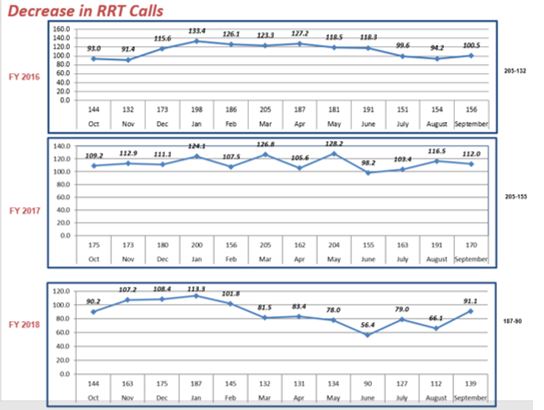Background: As the concept of a rapid response team continues to evolve nationwide, it is becoming increasingly apparent that the proactive monitoring of patients through surveillance tools is important to prevent adverse events. However, it is notable that the interpretation these surveillance tools require a higher level of clinical expertise and it is more and more evident that a rapid response team should include a provider level member. Bridgeport Hospital has had a rapid response team established since 2005. The purpose of this team was to provide immediate intervention on inpatients that acutely deteriorate during their hospital stay. The team originally consisted of a critically trained nurse and respiratory therapist. In 2018, the team added a Hospitalist advance practice provider.
Purpose: To decrease unwanted delays in the safe disposition of an ill patient by adding a Hospitalist advanced practice provider, using proactive surveillance and an organized system operation process to improve fluidity of the rapid response team.
Description: Using the Rothman Index and a locally designed sepsis alert system, the Rapid Response Hospitalist Provider proactively rounded on patients who were clinically deteriorating. The rapid response process was also changed to include immediate availability of the Hospitalist provider to every call so that urgent medical decisions were made without delay. Patients were stabilized faster and transferred to higher level care more swiftly.
Conclusions: The addition of a Hospitalist provider improved the rapid response team process. We noted a significant reduction in the duration of prolonged rapid response calls (those lasting greater than 90 minutes) by 51% implicating there is quicker and smoother transition to higher levels of care. Similarly, with active surveillance tools, the number of rapid response calls has also reduced dramatically as patients are being identified prior to becoming ill. From this, we conclude that it is important to have provider-level expertise to have an efficiently functioning rapid response team. Also, when properly utilized, surveillance tools can help identify patients at risk of clinical deterioration.


